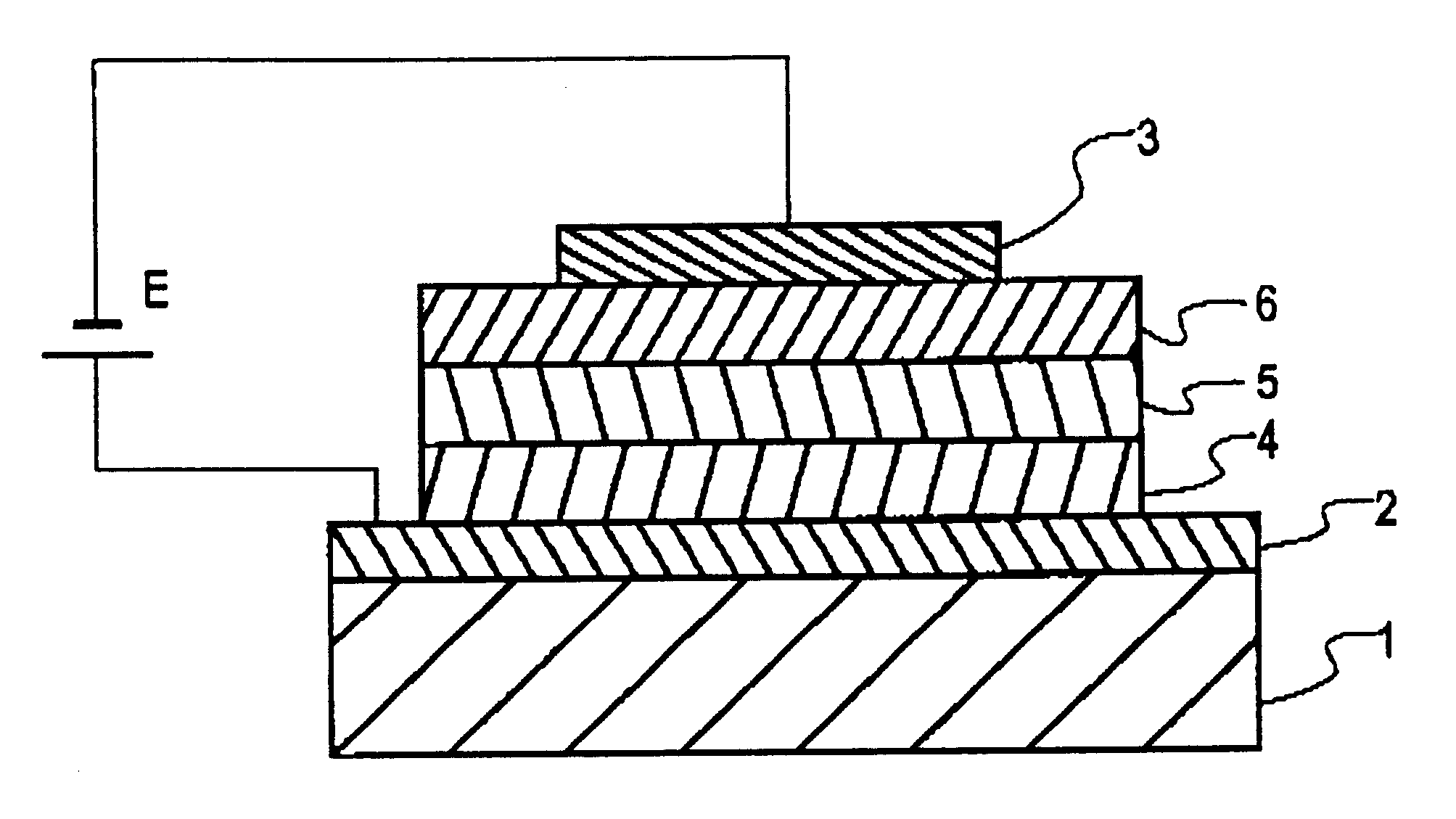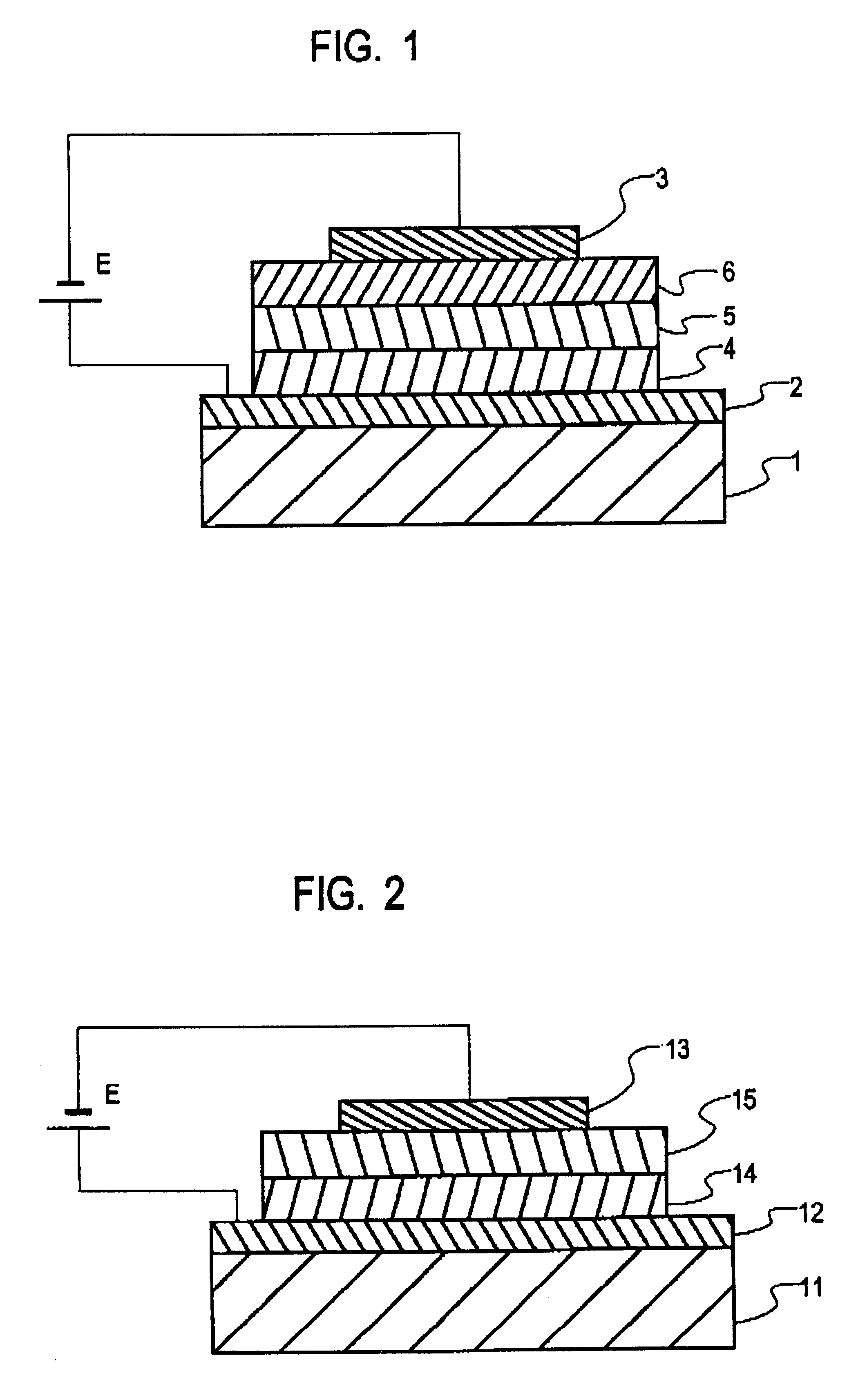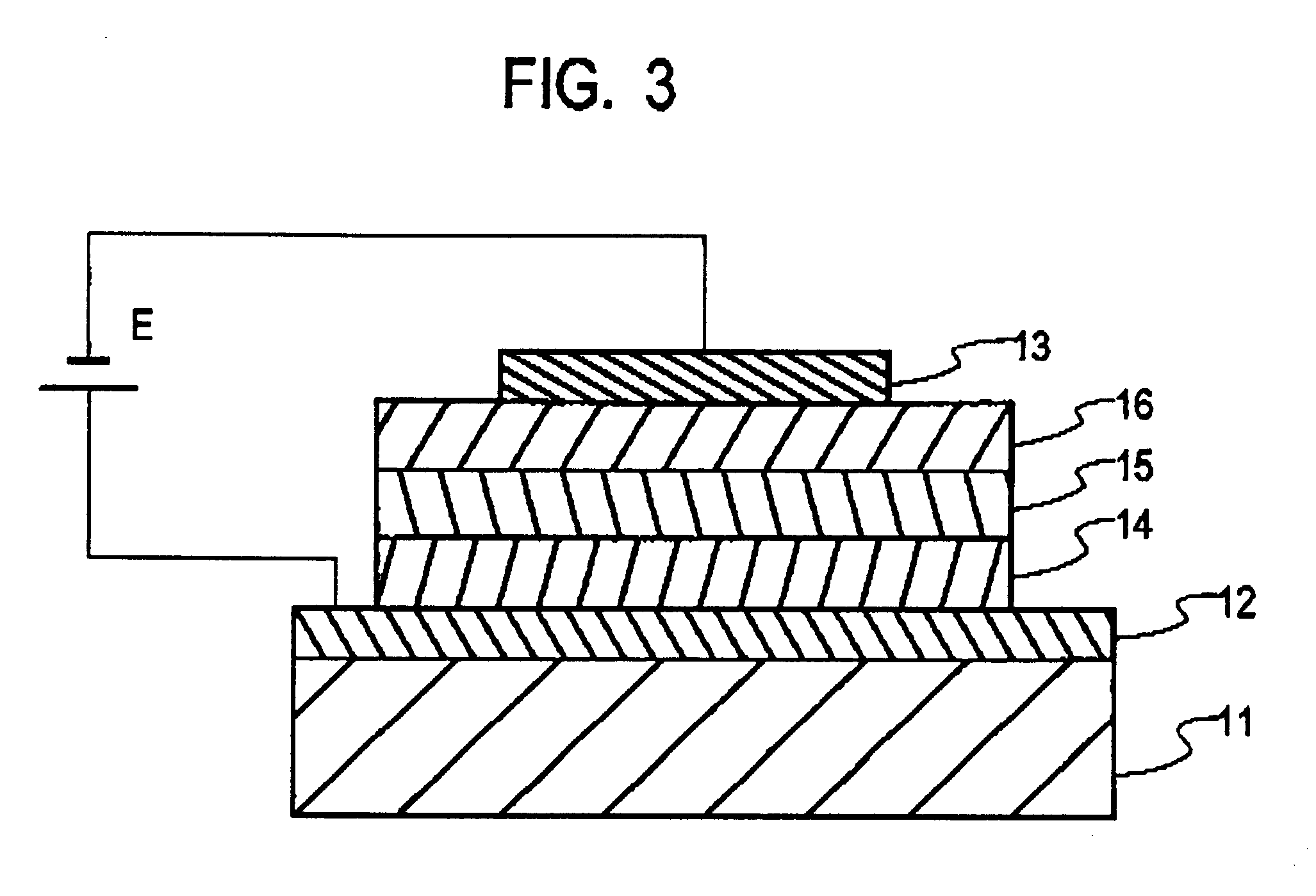Organic electroluminescent device
an electroluminescent device and organic technology, applied in the direction of discharge tube luminescnet screens, other domestic articles, natural mineral layered products, etc., can solve the problems of easy oxidizability, unstable, and sensitive materials of organic layers formed, and achieve high efficiency, low cost, and high stability.
- Summary
- Abstract
- Description
- Claims
- Application Information
AI Technical Summary
Benefits of technology
Problems solved by technology
Method used
Image
Examples
example 1
A substrate of (7059) glass by Corning Glass Works was scrubbed using a neutral detergent. The substrate was then secured by a holder in a sputtering apparatus where a hole injecting electrode layer of ITO was formed by a DC magnetron sputtering process using a target of ITO oxide.
The substrate having ITO deposited thereon was subjected to ultrasonic washing with neutral detergent, acetone, and ethanol, pulled up from boiling ethanol, and dried. After the surface was further cleaned with UV / O.sub.3, the substrate was secured by a holder in a spattering chamber, which was evacuated to a vacuum of 1.times.10.sup.-4 Pa or lower.
Next, using a target of SiO.sub.2, an inorganic insulative hole injecting layer was deposited to a thickness of 2 nm. The sputtering gas used was argon mixed with 5% of O.sub.2. Sputtering conditions included a substrate temperature of 25.degree. C., a deposition rate of 1 nm / min, an operating pressure of 0.5 Pa, and an input power of 5 W / cm.sup.2. The hole inje...
example 2
In Example 1, the main component and stabilizer of the inorganic electron injecting and transporting layer were changed from SrO to MgO, CaO or a mixture of these oxides, from Li.sub.2 O to K.sub.2 O, Rb.sub.2 O, K.sub.2 O, Na.sub.2 O, Cs.sub.2 O or a mixture of these oxides, and from SiO.sub.2 to GeO.sub.2 or a mixture of SiO.sub.2 and GeO.sub.2. Substantially equivalent results were obtained. Similar results were obtained when the negative electrode material was changed from Al to Ag, In, Ti, Cu, Au, Mo, W, Pt, Pd, Ni or an alloy thereof.
example 3
An organic EL device was fabricated as in Example 1 except that in the step of depositing the inorganic insulative hole injecting layer in Example 1, the composition of the target was changed to SiO.sub.2 and the flow rate of O.sub.2 in the sputtering gas was changed to a mixing ratio of 5% relative to Ar so that the layer had a composition of SiO.sub.1.9. On the lifetime test, substantially equivalent results were obtained.
Further, organic EL devices were similarly fabricated except that the composition of the target was changed to SiO.sub.2 and the flow rate of O.sub.2 in the sputtering gas was changed to a mixing ratio of 30% relative to Ar so that the layer had a composition of SiO.sub.1.95 ; the composition of the target was changed to GeO.sub.2 and the flow rate of O.sub.2 in the sputtering gas was changed to a mixing ratio of 30% relative to Ar so that the layer had a composition of GeO.sub.1.96 ; and the composition of the target was changed to SiO.sub.0.5 Ge.sub.0.5 O.sub.2...
PUM
| Property | Measurement | Unit |
|---|---|---|
| Thickness | aaaaa | aaaaa |
| Thickness | aaaaa | aaaaa |
| Electrical resistance | aaaaa | aaaaa |
Abstract
Description
Claims
Application Information
 Login to View More
Login to View More - R&D
- Intellectual Property
- Life Sciences
- Materials
- Tech Scout
- Unparalleled Data Quality
- Higher Quality Content
- 60% Fewer Hallucinations
Browse by: Latest US Patents, China's latest patents, Technical Efficacy Thesaurus, Application Domain, Technology Topic, Popular Technical Reports.
© 2025 PatSnap. All rights reserved.Legal|Privacy policy|Modern Slavery Act Transparency Statement|Sitemap|About US| Contact US: help@patsnap.com



